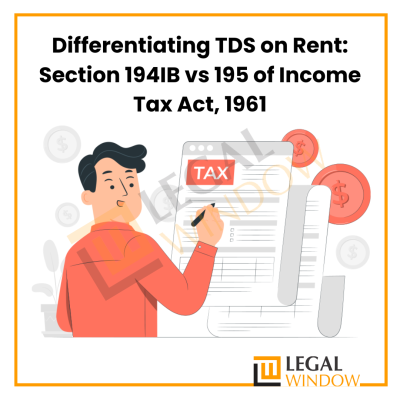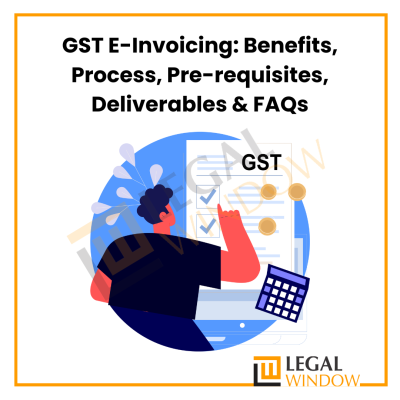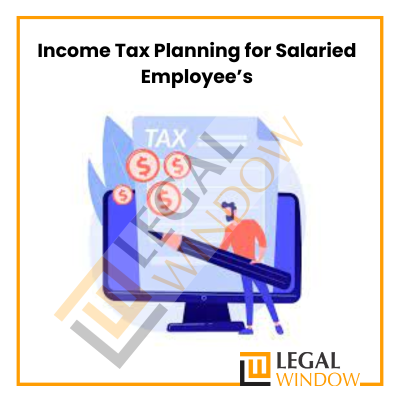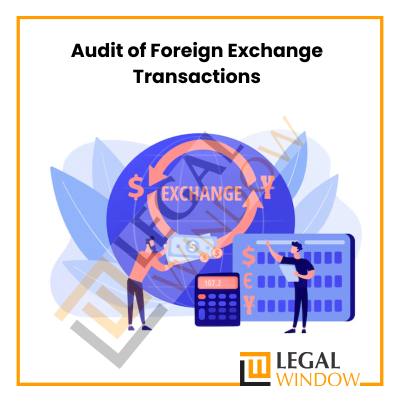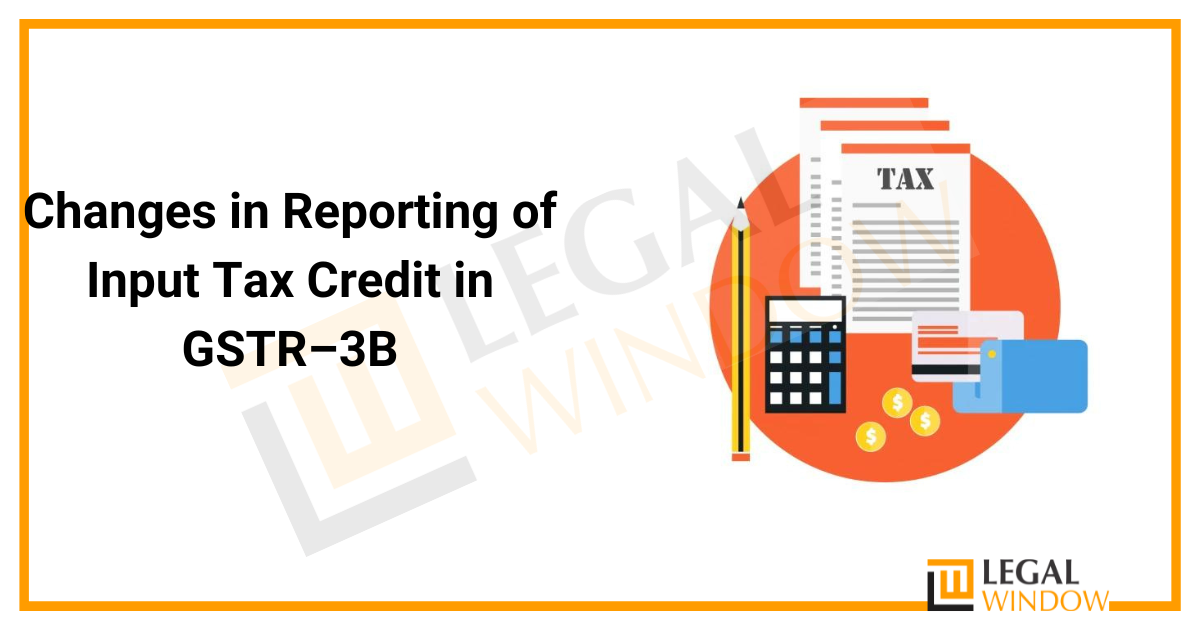 While preparing GSTR-3B for August 2022, you must take note of a critical modification. From the GSTR-3B of August 2022 forward, the form’s recently amended Table-4 will apply. On July 5, 2022, Central Tax Notification No. 14/2022 was released, notifying specific modifications in Table 4 of the form GSTR-3B for monthly and quarterly filers. GSTR-2B includes both permanent and temporary kinds of ineligible Input Tax Credits (ITC). For GSTR-3B reporting purposes, you must now handle both differently. In this article, we will discuss Changes In Reporting of Input Tax Credit
While preparing GSTR-3B for August 2022, you must take note of a critical modification. From the GSTR-3B of August 2022 forward, the form’s recently amended Table-4 will apply. On July 5, 2022, Central Tax Notification No. 14/2022 was released, notifying specific modifications in Table 4 of the form GSTR-3B for monthly and quarterly filers. GSTR-2B includes both permanent and temporary kinds of ineligible Input Tax Credits (ITC). For GSTR-3B reporting purposes, you must now handle both differently. In this article, we will discuss Changes In Reporting of Input Tax Credit
| Table of Content |
Key Abstract
It becomes complex when ITC entries discovered in GSTR-2B of one tax period are accounted for in books of accounts in either previous or subsequent tax periods. As a result, you must reconcile GSTR-2B with your accounts every tax period and submit ITC in GSTR-3B.
Your eligible ITC will be computed by subtracting the ITC reported in Table 4(A) from the sum of reversals provided in Tables 4(B)(1) and 4(B)(2) (2). This indicates that Table 4A (5) will cover all ITC categories, such as eligible, ineligible permanently, and temporarily. The GSTR-3B format modifications require you to record in Table 4(B) the permanently ineligible ITC that cannot be recovered at any time, such as Section 17(5) in Table 4 (B)(1).
But before we move on to discuss Changes in Reporting of Input Tax Credit, let us first briefly discuss the concept of Input Tax Credit under GST.
Concept of Input Tax Credit
The term “Input Tax Credit” (ITC) refers to a tax that has already been paid when goods and services are purchased and is available as a tax deduction.
As an example, suppose a trader purchases an item worth 100 Rupees (Rs.) and pays a 10% tax on it. And now this merchant has sold such things for Rs. 150 while collecting an Rs. 15 tax from the buyer. The dealer must now pay the government Rs. 15. Because he has previously paid Rs. 10, this Rs. 10 is the trader’s ITC, and he will be accepted as a taxpayer and must pay a total of Rs. 5 in tax.
The Requirements for Obtaining an Input Tax Credit under GST
Only registered individuals are entitled to claim the GST’s Input Tax Credit. Furthermore, a registered person may claim an Input Tax Credit if the following conditions are met:
- He possesses a Tax Invoice or another tax-paid document.
- He already possesses the goods or services. There are additional examples of “bill to ship.”
- The supplier is responsible for paying the tax.
- He has filled out his GST Return.
- If the inputs are delivered in lots or installments, the taxpayer is only eligible for the ITC once the last lot or installment is delivered.
- Payment must be received within 180 days after the invoice’s issuing date. If the payment is not received within 180 days, the amount of credit obtained, plus interest, will be added to the recipient’s output tax payable. However, after the cash is paid, the receiver will be allowed to utilize the credit once more. If a partial payment has been made, a credit will be awarded in proportion.
Changes in Reporting of Input Tax Credit
The assessees are required to review their method of recording ITC in their books once more to ensure true reporting by the revised form GSTR 3B. The amendment to Table 4(B) & (D) of form GSTR 3B was made under notification number 14/2022, and clarification regarding reporting of the same was given under Circular 170/02/2022.
The operational impact of the aforementioned amendment and clarification is discussed in more detail in the update below:
Impact of Changes to Table 4 of the GSTR 3B Form
The effects of the GSTR 3B Table 4 modification are as follows:
- Currently, the different assessee would just record ITC on the eligible inbound supply in their Input Tax Credit GST Guide ledger, along with which ITC is required to be respected in the aforementioned situations:
-
- To comply with Rules 42 and 43, ITC must be reversed based on the common inbound supply used for the taxable and exempt outbound supply
- Reversal & Reclaim of ITC if consideration is not paid to suppliers within 180 days of the invoice date; or
- Any reversal due to an improper ITC claim or usage in the past
-
- The assessee is not recording the ITC on inbound supply that falls under 17(5) and instead moving these ITCs directly to the P&L account.
- When claiming ITC in GSTR-3B, reconciliation between the Static ITC statement in Form GSTR 2B and the ITC recorded in books of accounts in the manner stated above will take place.
- The credit will be noted in the appropriate fields of table 4 of GSTR 3B following these reconciliations and by the additional requirements of Sections 16 and 17 of the CGST Act, 2017 read with Rules enacted in it.
- However, acknowledging that the ineligible declaration of ITC under Section 17(5) in Table 4(D)(1) was merely informative and that the other direct expenses treatment provided to these credits in the books of account by various assessees did not include the amount of the ineligible ITC under Section 17(5) in GSTR – 3B.
- All ITC as available in GSTR 2B form combined with ITC under qualified of section 17(5), Rule 42,43, and 38 and re-availed ITC (previously reversed owing to ineligibility under section 16(2)(c) & (d) and Rule 37) had to have elected to Table 4 after modification in Table 4(B) of GSTR – 3B (A). As a result, any ineligible ITC under the aforementioned requirements must be taken to Table 4. (B). As a result, the electronic credit ledger will be the sole place where Net ITC, as shown in Table 4(C), i.e., [4(A) – 4(B)], is credited.
- Since they are absolute and cannot be claimed, such as those that fall under Rule 38 or Section 17(5), it is imperative to record all of the ineligible ITCs.
- Accordingly, we believe that the assessee was required to make changes to their method of recording ITCs by categorizing them by various sections of the GST law that applied. For simplicity of use, we would have compiled a list of such kinds which are as follows:
-
- ITC ineligible under Section 17 (5)
- Unqualified and able to reclaim ITC under Rule 37 (non-payment of consideration within 180 days)
- ITC is ineligible for Rule 38 (reversal of credit by a banking company or a financial institution)
- ITC is ineligible under Rule 42 (common credit on inward supply of inputs or input services utilized for outward supply of taxable including the exempted supply)
- ITC is ineligible under Rule 43 (common credit on inward supply of capital goods utilized for the outward supply of taxable and exempted supply)
- ITC is ineligible due to the variation in supply location.
- An input tax credit that is ineligible under Section 16 because it is applied to invoices with a deadline (4)
-
- Because section 16’s requirements weren’t met, such as when an invoice was received in the current month but the supply was obtained in the next month, the ITC was ineligible for the duration of the current tax.
- Ineligible ITC was exclusively used by one party for commercial purposes.
- Every other ITC is qualified.
- In the following two situations, Form GSTR 2B does automatically designate ITC as ineligible ITC:
-
- ITC ineligibility, intra-State supply, the recipient’s specific location, and finally the source of supply
- ITC on invoices with a deadline under Section 16 (4) is ineligible.
-
- Every assessee would be required to revisit their current method of recording ITC in their books of accounts and develop the precise amendments to ensure the true data availability for the reconciliation with ITC in GSTR – 2B and smooth reporting in Form GSTR – 3B. This is in recognition of the amendments in reporting ITC in tables 4(B) & (D) of GSTR – 3B.
Reversal of ITC in Some Situations
If the receiver does not pay the supplier for the number of goods or services and tax due within 180 days, the supplier may revoke the input tax credit that the recipient currently has. The beneficiary of the input tax credit will also be responsible for paying interest on the amount of the deducted credit amount upon return of the credit. By paying the value of the goods or services plus the tax due, the recipient may be able to recoup the Input Tax Credit.
A registered person may also be required to modify the ITC in some circumstances, such as when the supplier picks the design process, significant assets are sold, registration is revoked, etc. In these situations, the creditor goes to great lengths to postpone the obligation for the allotted amount of time. In addition to the ITC amount that will be subtracted, he will also be responsible for paying interest and penalties if he fails to pay back that obligation.
Additional Vital Points Regarding GST Input Tax Credit
Other factors to take into account regarding the Changes In Reporting of Input Tax Credit are:
- Only if the invoice contains all of the relevant information outlined in the invoice rules is a registered person eligible to claim the input tax credit.
- Additionally, the ITC may be carried forward or recovered if the tax on inputs is higher than the output tax.
- Additionally, by the 20th of the following month, the government must receive the leftover tax after claiming the input tax credit in GSTR 3.
- After September of the next fiscal year to which the invoice pertains, or until the date of submitting the Annual Return, whichever comes first, claims for ITC are not admissible.
- A person may claim ITC on goods held in stock on the day before the date that he becomes liable to pay tax if they apply for GST Registration within 30 days of being eligible for registration.
- In addition, a person who changes from the composition scheme to the conventional scheme under Section 10 is eligible to claim ITC on capital goods and items retained in stock on the day before he becomes obliged to pay tax as a regular taxpayer.
- Additionally, the person making the exempt supply of goods or services, or both, is qualified to claim ITC on items held in stock that are connected to the exempt supply when the exempt supply of goods or services, or both, becomes taxable. Additionally, he is qualified for a credit for capital goods used only for such an exempt supply.
- The remaining ITC may be transferred to the transferee if a registered person’s constitution changes as a result of a sale, merger, demerger, or another event.
- Additionally, if the Reverse Charge Mechanism is used to pay the GST, an Input Tax Credit may be claimed.
 Takeaway
Takeaway
In form GSTR-2B, taxpayers must specify any unused ITC from prior months as well as any applicable ITC for the current tax period. They are required to retain a record of any ITC that occasionally appears in GSTR-2B but is not recorded in the books of accounts. In the old indirect tax arrangement, a state charge cannot be offset against a central tax credit and vice versa. As a result, we can infer that interstate transaction were not eligible for ITC. Additionally, there was a cascading effect that increased the cost of goods and services.
With the help of its qualified professionals, Legal Window guarantees you a high level of satisfaction, prompt delivery of the GST Registration Certificate and other GST-related services, and better dealing with governmental requirements. Contact our staff at 072407-51000 or by email at admin@legalwindow.in for assistance with GST registration and GST compliance.
CA Pulkit Goyal, is a fellow member of the Institute of Chartered Accountants of India (ICAI) having 10 years of experience in the profession of Chartered Accountancy and thorough understanding of the corporate as well as non-corporate entities taxation system. His core area of practice is foreign company taxation which has given him an edge in analytical thinking & executing assignments with a unique perspective. He has worked as a consultant with professionally managed corporates. He has experience of writing in different areas and keep at pace with the latest changes and analyze the different implications of various provisions of the act.
Categories
- Agreement Drafting (23)
- Annual Compliance (11)
- Change in Business (36)
- Company Law (148)
- Compliance (90)
- Digital Banking (3)
- Drug License (3)
- FEMA (17)
- Finance Company (42)
- Foreign Taxation (6)
- FSSAI License/Registration (14)
- GST (120)
- Hallmark Registration (1)
- Income Tax (202)
- Latest News (34)
- Miscellaneous (165)
- NBFC Registration (8)
- NGO (14)
- SEBI Registration (6)
- Section 8 Company (7)
- Start and manage a business (21)
- Startup/ Registration (130)
- Trademark Registration/IPR (40)
Recent Posts
About us
LegalWindow.in is a professional technology driven platform of multidisciplined experts like CA/CS/Lawyers spanning with an aim to provide concrete solution to individuals, start-ups and other business organisation by maximising their growth at an affordable cost.

